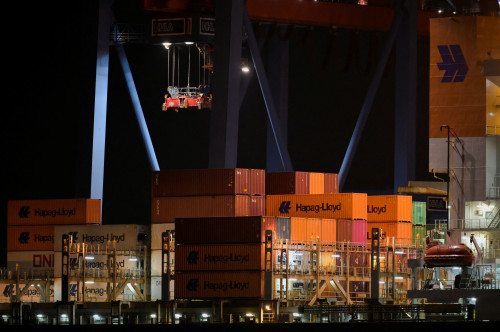LONDON (Reuters) – For markets trying to assess how quickly interest rate moves are likely to come, it’s all about the data.
That puts a closely watched U.S. inflation gauge, Tokyo’s CPI index and preliminary June data from some euro zone economies in the spotlight.
Central bank meetings in emerging markets and the run-up to elections in Britain and France means there’s plenty going on.
Here’s your week ahead primer in world markets from Ira Iosebashvili in New York, Kevin Buckland in Tokyo, Karin Strohecker and Samuel Indyk in London and Yoruk Bahceli in Amsterdam.
1/ COOL DOWN
That long-awaited slowdown in U.S. inflation has been hard to come by, but investors are hopeful, perhaps more so than the Fed officials anticipating just one rate cut this year.
Friday’s key inflation gauge, the personal consumption expenditures (PCE) price index, should show whether the easing inflation trend is in place.
But there’s reason for caution.
Recent PCE readings have not always conformed to expectations. The most recent, reported on May 31, showed U.S. inflation unexpectedly tracking sideways in April.
Another such reading on June 28 could undercut the case for those who believe rate cuts are coming anytime soon. Unlike the Fed, markets are holding out for almost two rate cuts this year.
2/ JURY OUT ON JULY
The Bank of Japan has kept the door open to a July rate hike. Markets are not convinced and assign less than 1-in-3 odds to a quarter-point increase.
A big reason for that is the BOJ has already said it will also outline quantitative tightening next month. The argument goes that doing too much at once risks roiling bond markets.
Of course, the BOJ – like everyone else – is data-dependent. And the data thus far isn’t exactly exerting pressure to tighten. Weak consumer spending is a particular worry, and demand-driven inflation has cooled for nine straight months.
Some key macro readings in coming days will help shed light on the outlook, with retail sales data due Thursday and Tokyo CPI a day later. The BOJ also releases the minutes of its June meeting on Monday.
3/ INFLATION WATCH
Euro zone June inflation data trickles in from Friday with flash prints for France, Italy and Spain.
The data will set the tone for a euro zone-wide print on July 2, key for traders trying to gauge how many times the European Central Bank will cut rates this year.
The ECB cut rates on June 6, but still strong domestic inflation and wages have raised question marks on how many more will follow.
Traders expect one more cut and a roughly 64% chance of a second by year-end, down from nearly 80% before the June meeting.
Any upside surprise would sour the mood for investors grappling with fresh political uncertainty after French President Emmanuel Macron called a first round French election on June 30.
4/ CURRENCY EXCHANGE
It’s funny how quickly times change. While Britain has been a hot spot for political instability for some time, the euro zone has been relatively calm.
Yet, it’s the snap French parliamentary election that has markets fretting that a majority for the far-right could mean more spending, hurting France’s already frail fiscal position.
Traders have pushed the euro to one-month lows; further weakness could be in store in the next few days.
Sterling meanwhile is benefiting from expectations that a big win for the opposition Labour majority in Britain’s July 4 election will bring stability.
It’s the best performing major currency versus the dollar so far this year and has hit almost two-year highs versus the euro.
Ironically, concern that a Liz Truss-style episode, when Britain’s plans for unfunded tax cuts in 2022 roiled markets, could be repeated in France helps explain jitters towards the euro. After all, that episode sunk the pound to record low.
5/ WAITING FOR THE FED
A push by many emerging market central banks to front run a global easing cycle has lost momentum as the prospect of near-term Fed rate cuts fades and king dollar weighs on many a currency.
Mexico’s central bank is expected to keep rates on hold on Thursday. It’s grappling with inflation ticking up and election-induced peso volatility after a surprise strong showing of the ruling party coalition in a June 2 ballot that spooked investors.
Policymakers in the Philippines – meeting the same day – are set to leave rates at 17-year highs, having flagged their restrictive policy settings as appropriate.
And Turkey – a reluctant late joiner to the hiking cycle – is seen sticking with its benchmark rate at 50%, as policymakers still feel the sting of inflation which stood at an eye watering 75% in May.
(Compiled by Dhara Ranasinghe; Graphics by Kripa Jayaram, Pasit Kongkunakornkul, Prinz Magtulis, Vineet Sachdev; Editing by Miral Fahmy)




